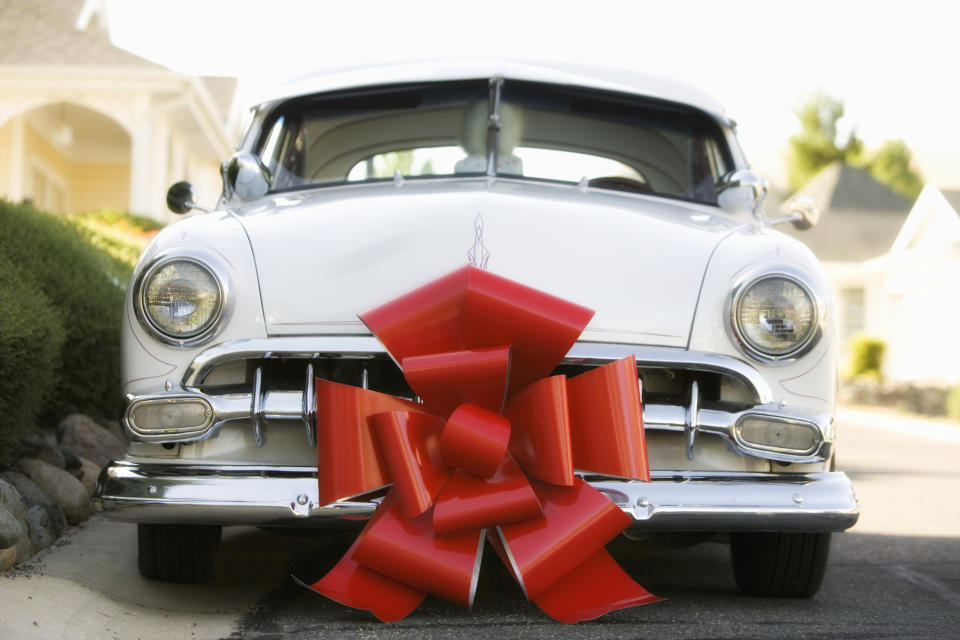How the taxman can pay for your new car

The centrepiece of the recent Federal Budget was the introduction of a new ‘full expensing’ scheme for businesses.
‘Full expensing’ will allow eligible business to claim an immediate tax deduction for the full cost of eligible assets acquired between 7:30pm AEDT on 6 October 2020 (Budget night) and 30 June 2022.
More from Mark Chapman: 2020 Budget: What it means for small business owners
So, if you run a business, this new immediate tax deduction presents a great opportunity to go out and purchase a new motor vehicle for your business and write off the entire cost against your business profits.
Who is eligible?
Businesses with aggregated annual turnover of less than $5 billion will be able to deduct the full cost of eligible capital assets, which includes cars and other vehicles. In practice, this is the vast majority (about 99%) of Australian businesses.
Can I claim the cost of second hand cars?
Only small- and medium-sized businesses (with aggregated annual turnover of less than $50 million), can fully expense the cost of second hand vehicles. That still covers the vast majority of Australian businesses.
Bigger businesses (with a turnover between $50 million and $500 million) can also purchase second hand vehicles using a different tax deduction (the ‘instant asset write-off’) provided they make the purchase by 31 December 2020.
So I can rush out and buy a new Porsche for my business?
Not necessarily.
For cars, the deduction that can be claimed using the ‘full expensing’ scheme is capped at $59,136.
The ATO has long sought to prevent businesses claiming excessive depreciation deductions for so-called ‘luxury’ cars so each year they set a limit on the size of claim that can be made in relation to such cars. This overrides the ‘full expensing’ provisions.
So, if the cost of the car is less than $59,136 (net of GST), the full cost can be claimed as a deduction. For cars costing more than that, the maximum claim is $59,136. So, your business can go out and splurge on a new Ferrari or Porsche, but the deduction is capped at $59,136. The excess cannot be claimed under ‘full expensing’ or any other deduction provision.
Note that the car limit does not apply to vehicles fitted out for use by people with disabilities.
What about commercial vehicles?
The expensive car limit does not apply to commercial vehicles. So, vehicles such as vans, buses and some utes are not impacted by the expensive car limit, meaning that the entire cost can be written off.
This could be particularly useful for may tradies.
Vehicles with a payload capacity of more than one tonne are classified as commercial vehicles. This means that some high-end utes (costing well in excess of $59,136) can be fully claimed.
The one tonne carrying capacity limit relates to the maximum load the vehicle can carry, also known as the payload capacity. The payload capacity is the gross vehicle mass (GVM) as specified on the compliance plate by the manufacturer, reduced by the basic kerb weight of the vehicle. The basic kerb weight is the weight of the vehicle with a full tank of fuel, oil and coolant together with spare wheel, tools (including jack) and factory-installed options. The weight of passengers, goods or accessories (eg bull bars, roof racks, etc) is excluded.
That might sound like a complicated calculation but if you have your eye on a new ute, your vehicle dealer will be able to confirm whether or not it qualifies as a commercial vehicle, and hence is exempt from the expensive car limit.
What if I use the vehicle privately?
If a company buys the vehicle, it can write-off the full cost of the vehicle (subject to the expensive car limit) even if it used privately, for instance by a director of the company. However, the company will have to pay Fringe Benefits Tax based on the private usage of the vehicle.
For sole traders, the amount of the deduction will need to be apportioned between business use and private use. For instance, if you’re a self-employed tradie and you purchase a new ute for $40,000 that you use 50% in your business and 50% privately, you can claim an immediate deduction for $20,000.
I’m a ride-sourcing driver. Can I claim the cost of a new car using this tax break?
Yes, this is a great tax break for Uber and other ride-sourcing drivers. You can potentially go out and purchase a new vehicle and claim a full tax deduction for the cost, subject to the expensive car limit and any reduction for private use.
I’m not in business. Can I write-off the full cost of my new car using this tax break?
Unfortunately, the ‘full expensing’ provision only applies to vehicles bought by a business. If you are an employed individual, you can’t take advantage and will need to write-off the work-related cost of your vehicle either by depreciating it over a certain number of years (usually 8) if you keep a logbook or by claiming the fixed cents per kilometre rate (currently 72 cents/km), which includes an element for depreciation.
Make your money work with Yahoo Finance’s daily newsletter. Sign up here and stay on top of the latest money, news and tech news.
Follow Yahoo Finance Australia on Facebook, Twitter, Instagram and LinkedIn.


